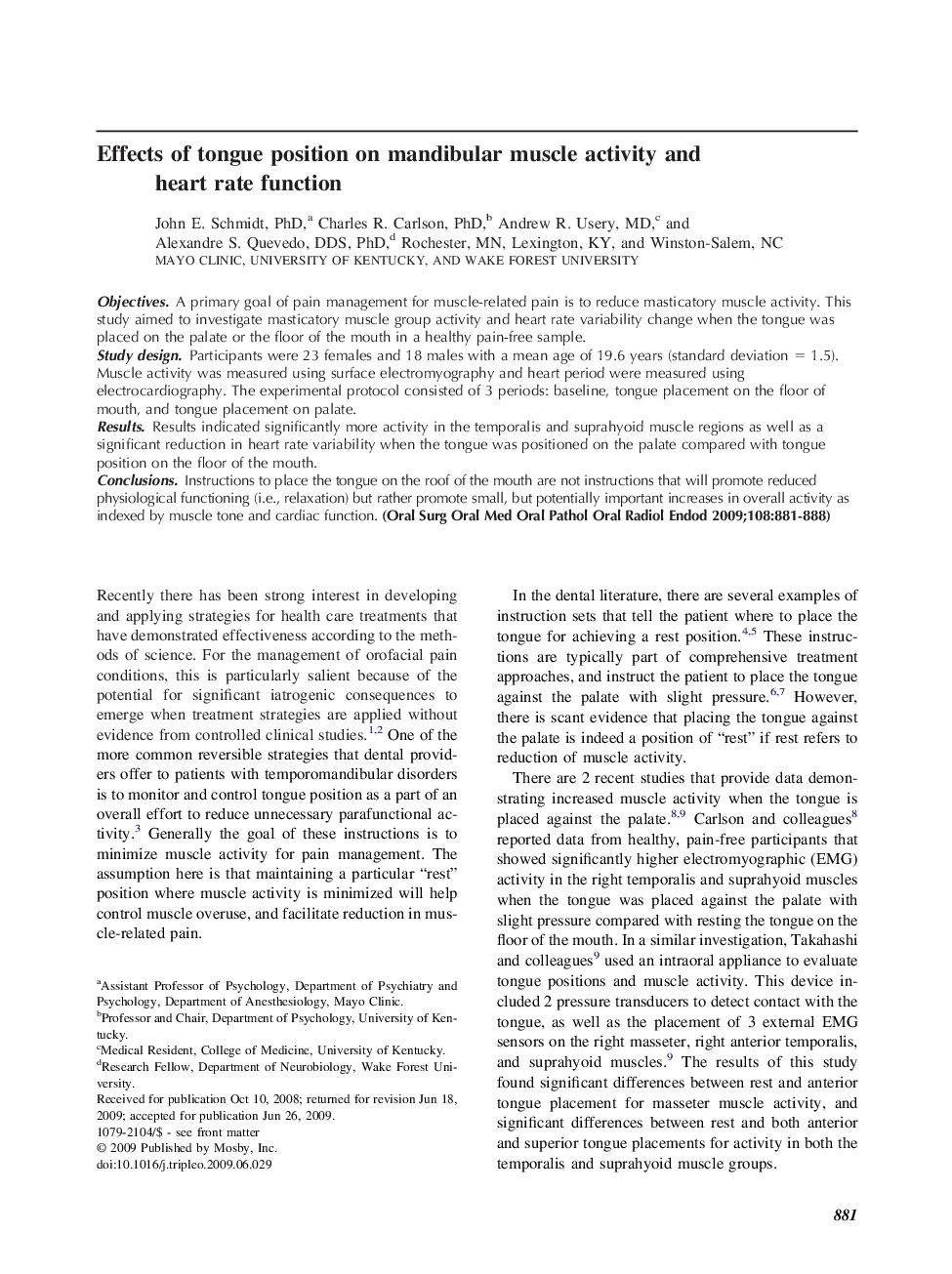| Article ID | Journal | Published Year | Pages | File Type |
|---|---|---|---|---|
| 3167784 | Oral Surgery, Oral Medicine, Oral Pathology, Oral Radiology, and Endodontology | 2009 | 8 Pages |
ObjectivesA primary goal of pain management for muscle-related pain is to reduce masticatory muscle activity. This study aimed to investigate masticatory muscle group activity and heart rate variability change when the tongue was placed on the palate or the floor of the mouth in a healthy pain-free sample.Study designParticipants were 23 females and 18 males with a mean age of 19.6 years (standard deviation = 1.5). Muscle activity was measured using surface electromyography and heart period were measured using electrocardiography. The experimental protocol consisted of 3 periods: baseline, tongue placement on the floor of mouth, and tongue placement on palate.ResultsResults indicated significantly more activity in the temporalis and suprahyoid muscle regions as well as a significant reduction in heart rate variability when the tongue was positioned on the palate compared with tongue position on the floor of the mouth.ConclusionsInstructions to place the tongue on the roof of the mouth are not instructions that will promote reduced physiological functioning (i.e., relaxation) but rather promote small, but potentially important increases in overall activity as indexed by muscle tone and cardiac function.
